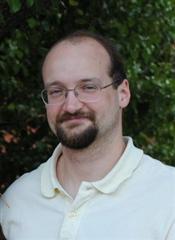Program Information
Tangential Modulated Arc Therapy: A Novel Technique for the Treatment of Superficial Disease
M Hadsell*, E Chin , R Li , L Xing , K Bush , Stanford University Cancer Center, Stanford, CA
Presentations
SU-E-T-309 Sunday 3:00PM - 6:00PM Room: Exhibit HallPurpose: We propose a new type of treatment that employs a modulated and sliding tangential photon field to provide superior coverage of superficial targets when compared to other commonly employed methods while drastically reducing dose to the underlying sensitive structures often present in these cases.
Methods: Modulated treatment plans were formulated for a set of three representative cases. The first was a revised treatment of a scalp sarcoma, while the second was a treatment of a right posterior chest wall sarcoma. For these cases, asymmetric jaw placement, angular limitations, and central isocenter placements were used to force the optimization algorithm into finding solutions with beamlines that were not perpendicular to the body surface. The final case targeted the chest wall of a breast cancer patient, in which standard treatments were compared to the use of modulated fields with multiple isocenters along the chest wall.
Results: When compared with unrestricted modulated arcs, the tangential arc scalp treatment reduced the max and mean doses delivered to the brain by 33Gy (from 55 to 22Gy) and 6Gy (from 14Gy to 8Gy), respectively. In the right posterior chest wall case, the V10 in the ipsilateral lung was kept below 5% while retaining a Rx dose (45Gy) target coverage of over 97%. For the breast case, the modulated plan achieved reductions in high dose to the ipsilateral lung and heart by a factor of 2-3 when compared to classic laterally opposed tangents and reduced the V5 by 40% when compared to standard modulated arcs.
Conclusion: Tangential modulated arc therapy has outperformed the conventional modalities of treatment for superficial lesions used in our clinic. We hope that with the advent of digitally controlled linear accelerators, we can uncover further benefits of this new technique and extend its applicability to a wider section of the patient population.
Contact Email:


